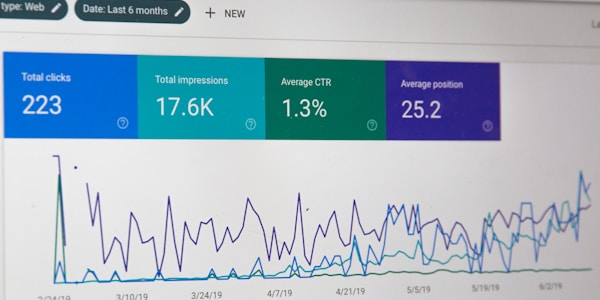Eight months ago, when we announced our first award cycle, I honestly wasn't sure what to expect. Would people participate? Would we receive quality nominations? Would the cybersecurity community embrace this idea of celebrating excellence rather than just discussing failures? Now, as we wrap up our inaugural awards process, I can say with certainty that the response exceeded every expectation I had.
We received over 300 nominations across our six award categories. That number alone was encouraging, but what really impressed me was the quality and diversity of the submissions. We heard about innovative threat detection systems developed by small teams with limited budgets. We learned about awareness training programs that reduced phishing success rates by 85%. We discovered research projects that could reshape how we think about zero-day vulnerabilities.

But the numbers only tell part of the story. What really struck me were the stories behind the nominations. Take Rebecca, a security consultant who developed a cybersecurity program specifically for small nonprofits. She realized that organizations with missions to help vulnerable populations were themselves vulnerable to cyber attacks that could compromise sensitive data about the people they serve. Her program provides affordable security assessments, training, and ongoing support to nonprofits that could never afford traditional cybersecurity services.
Rebecca's work perfectly illustrates something we learned from this first cycle: excellence in cybersecurity takes many forms. It's not just about preventing nation-state attacks on Fortune 500 companies. It's also about protecting small organizations that serve their communities. It's about making cybersecurity accessible to everyone who needs it.
Another lesson came from the sheer geographic diversity of our nominations. We received submissions from cybersecurity professionals in 42 countries across six continents. This global participation reminded me that cybersecurity challenges and innovations are truly worldwide phenomena. The threat landscape doesn't respect borders, and neither does the community of professionals working to address it.
One nomination that particularly moved me came from colleagues nominating Dr. Priya Sharma, a researcher in India who has been working on cybersecurity solutions for rural banking systems. Her work ensures that people in remote areas can safely access financial services through mobile technology. She's literally expanding financial inclusion while maintaining security, addressing both digital divide and cybersecurity challenges simultaneously.
The evaluation process taught us a lot too. We assembled review committees with diverse expertise and backgrounds, but even so, we faced challenges in comparing very different types of contributions. How do you compare groundbreaking research with outstanding incident response leadership? How do you weigh technical innovation against community impact?
We learned that our evaluation criteria needed to be more nuanced. Technical excellence is important, but so are factors like scalability, accessibility, and potential for broader impact. We also realized we needed better ways to assess nominations where the full details couldn't be shared due to confidentiality requirements. Many of the most impressive security achievements happen within classified or proprietary contexts.
One of the most surprising lessons was about the nomination process itself. We found that many of the most deserving candidates were nominated by their peers rather than self-nominating. This speaks to something beautiful about our cybersecurity community: people are quick to recognize and celebrate each other's achievements, even when they're modest about their own accomplishments.
However, this also revealed a challenge. Some of the most innovative work is being done by individuals who don't have strong professional networks or whose work isn't well-known outside of their immediate organizations. We realized we need to be more proactive about seeking out these contributions and creating pathways for recognition that don't depend entirely on peer networks.
The diversity of our nominees also taught us important lessons. While we made efforts to reach underrepresented groups in cybersecurity, we still saw disparities in nomination patterns. Women and professionals from underrepresented ethnic backgrounds were less likely to be nominated in technical categories and more likely to be nominated in leadership and community impact categories. This reflects broader patterns in our industry that we need to actively address.
We also learned about the importance of storytelling in recognition programs. The most compelling nominations weren't just lists of technical achievements. They were narratives that explained the context, challenges, and impact of the work. They helped us understand not just what was accomplished, but why it mattered and how it was achieved.
This storytelling aspect became crucial during our selection process. Our review committees found themselves drawn to nominations that painted a clear picture of how the work made a difference. Technical excellence matters, but understanding the human impact of that excellence is what makes recognition meaningful.
Perhaps the most important lesson was about the ripple effects of recognition. As we began announcing our finalists and winners, we started hearing from organizations that were inspired to nominate their own team members for future cycles. We heard from cybersecurity professionals who felt motivated to tackle more ambitious projects. We even heard from students who became interested in cybersecurity careers after reading about our award recipients.
This confirmed something I suspected from the beginning: recognition doesn't just celebrate past achievements. It encourages future excellence. It creates role models and inspiration for others. It demonstrates that innovation and dedication in cybersecurity are valued and noticed.
Looking ahead to our second award cycle, we're implementing several changes based on these lessons. We're expanding our outreach efforts to identify excellent work in underrepresented communities and organizations. We're refining our evaluation criteria to better assess diverse types of contributions. We're also creating mentorship opportunities to help more people craft compelling nominations.
But the core mission remains the same: to shine a light on the incredible work happening in cybersecurity every day. This first cycle proved that there's an abundance of excellence in our field. There are researchers making breakthrough discoveries, practitioners implementing innovative solutions, leaders building stronger teams, and educators preparing the next generation of professionals.
What gives me the most hope is how our cybersecurity community embraced this opportunity to celebrate each other. In an industry often focused on threats and failures, we demonstrated our capacity for recognizing and supporting success. We showed that we can be as passionate about celebrating achievements as we are about preventing attacks.
As we plan for the future, I'm excited about the potential for this program to continue growing and evolving. Every nomination teaches us something new about the breadth and depth of excellence in cybersecurity. Every story we share helps others understand the importance and impact of this work.
The first cycle is complete, but the journey is just beginning. Here's to all the hidden heroes we've discovered and all the ones we have yet to meet.


